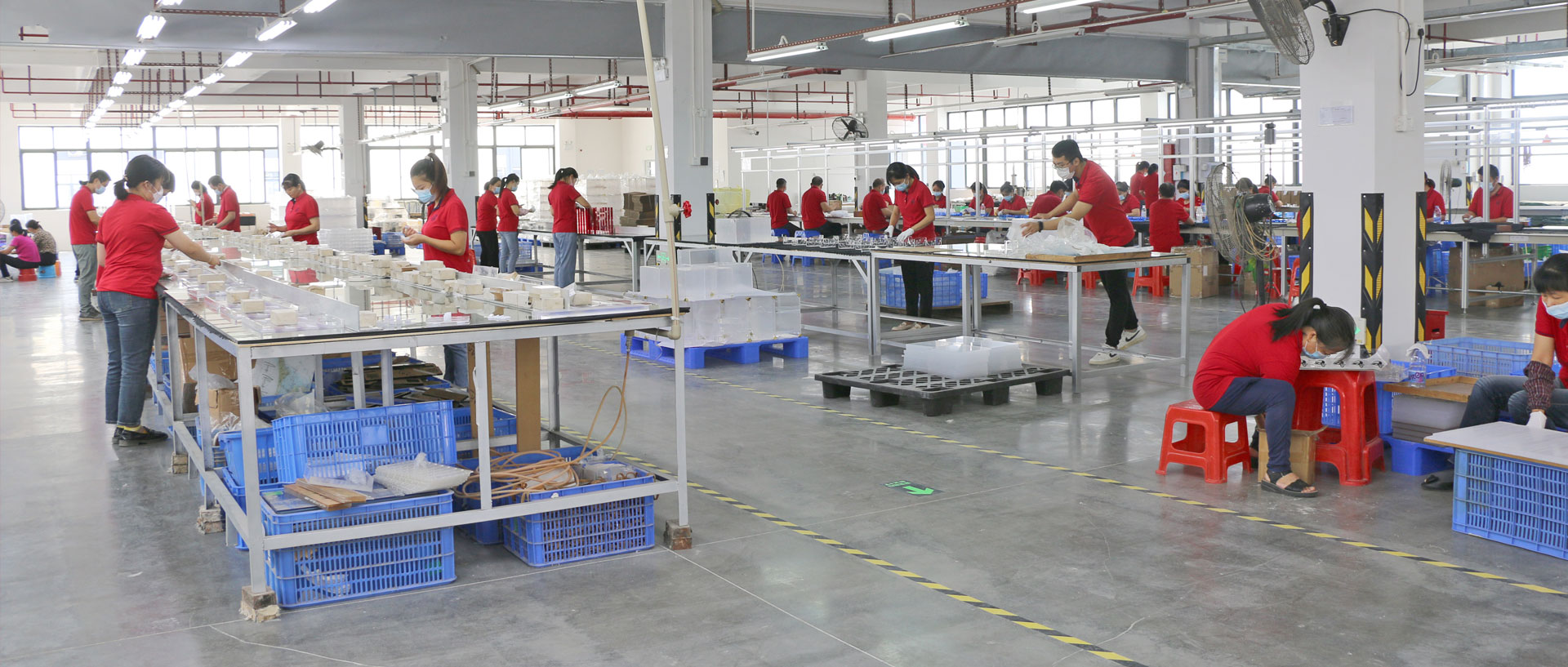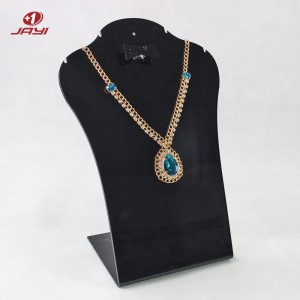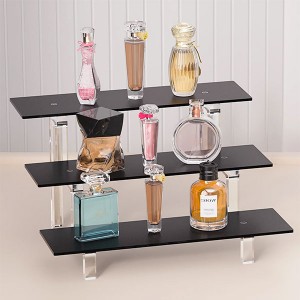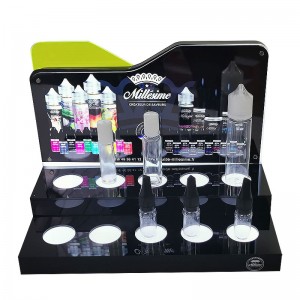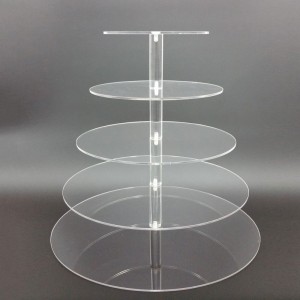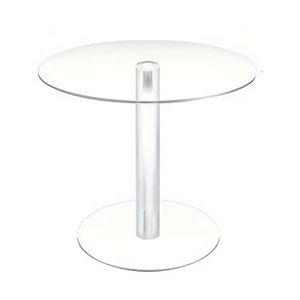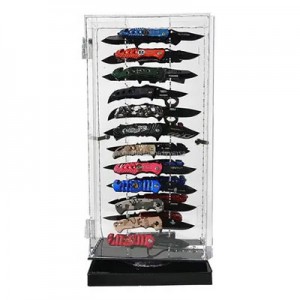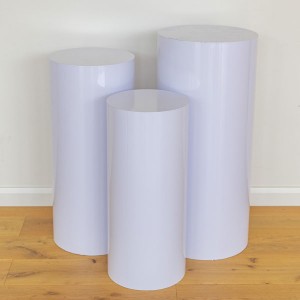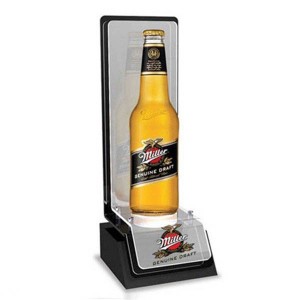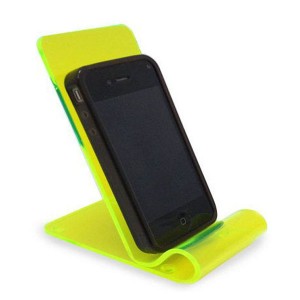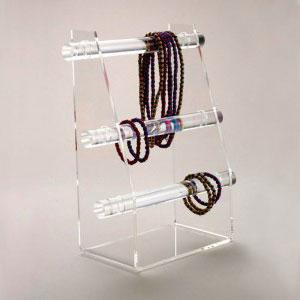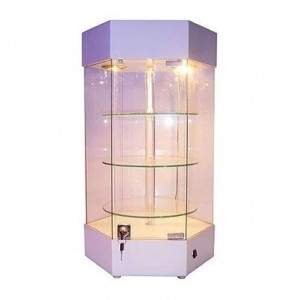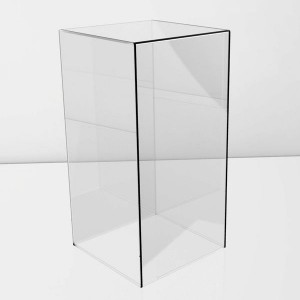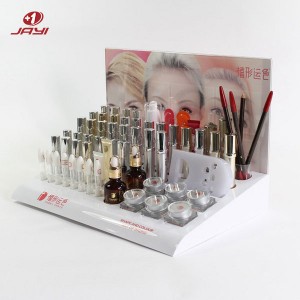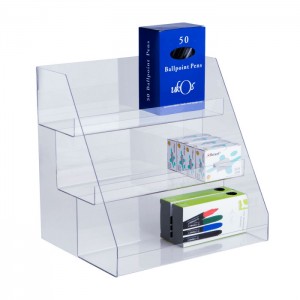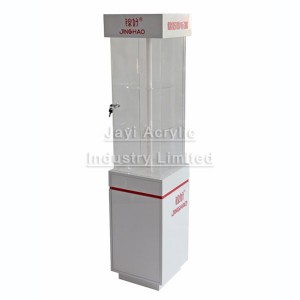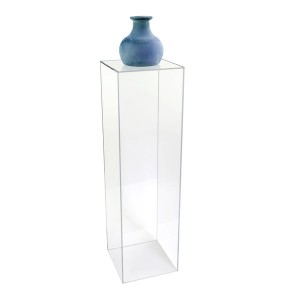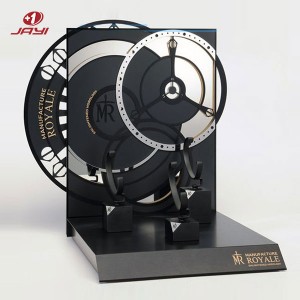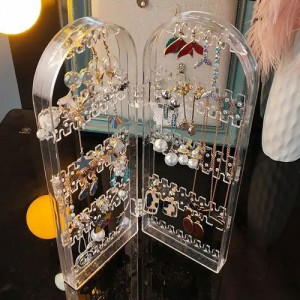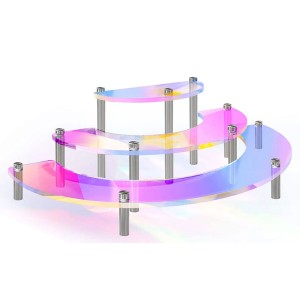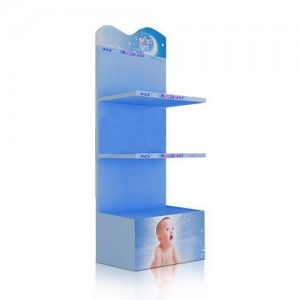
When stepping into a beauty boutique or scrolling through a wholesale cosmetic catalog, the first thing that catches your eye is often the display. A well-designed cosmetic display doesn’t just hold products—it tells a brand story, attracts customers, and drives sales. However, with numerous materials available, selecting between acrylic, wooden, and metal cosmetic displays can be overwhelming for both retail owners and wholesale suppliers.
In this guide, we’ll break down the key differences between these three popular display materials, focusing on factors that matter most for retail and wholesale success: durability, aesthetics, cost-effectiveness, customization, and practicality. By the end, you’ll have a clear answer to the question: which material is the best fit for your business?
1. Understanding the Basics: What Are Acrylic, Wooden, and Metal Cosmetic Displays?
Before comparing, let’s clarify what each material brings to the table.
Acrylic Cosmetic Displays are made from polymethyl methacrylate (PMMA), a lightweight yet rigid plastic often called “plexiglass” or “lucite.” They’re known for their crystal-clear transparency, which mimics glass without the fragility. Acrylic displays come in various forms—countertop organizers, wall-mounted shelves, and freestanding units—and can be tinted, frosted, or printed with brand logos.
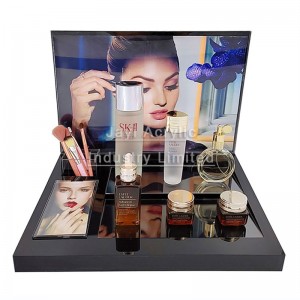
Wooden Cosmetic Displays are crafted from natural woods like oak, pine, or bamboo, or engineered wood such as MDF (medium-density fiberboard). They exude warmth and a rustic or luxury vibe, depending on the wood type and finish (e.g., stained, painted, or raw). Wooden displays are popular for brands aiming for an artisanal or eco-friendly image.
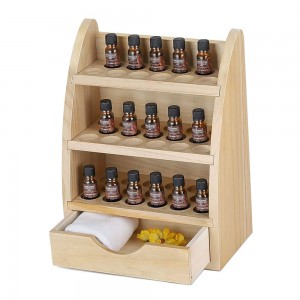
Metal Cosmetic Displays are typically made from stainless steel, aluminum, or iron, often with finishes like chrome, matte black, or gold plating. They’re prized for their strength and sleek, modern look. Metal displays range from minimalist wire racks to sturdy freestanding fixtures, and they’re commonly used in high-end retail spaces or industrial-chic stores.
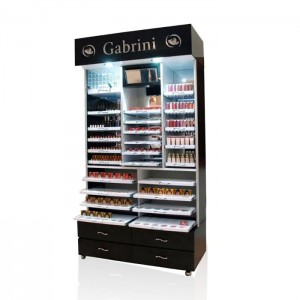
2. Durability: Which Material Stands the Test of Time?
For both retail and wholesale, durability is non-negotiable. Displays must withstand daily use, transportation (for wholesale), and exposure to cosmetic products (like oils, creams, and perfumes).
Acrylic Cosmetic Displays: Resilient Yet Gentle
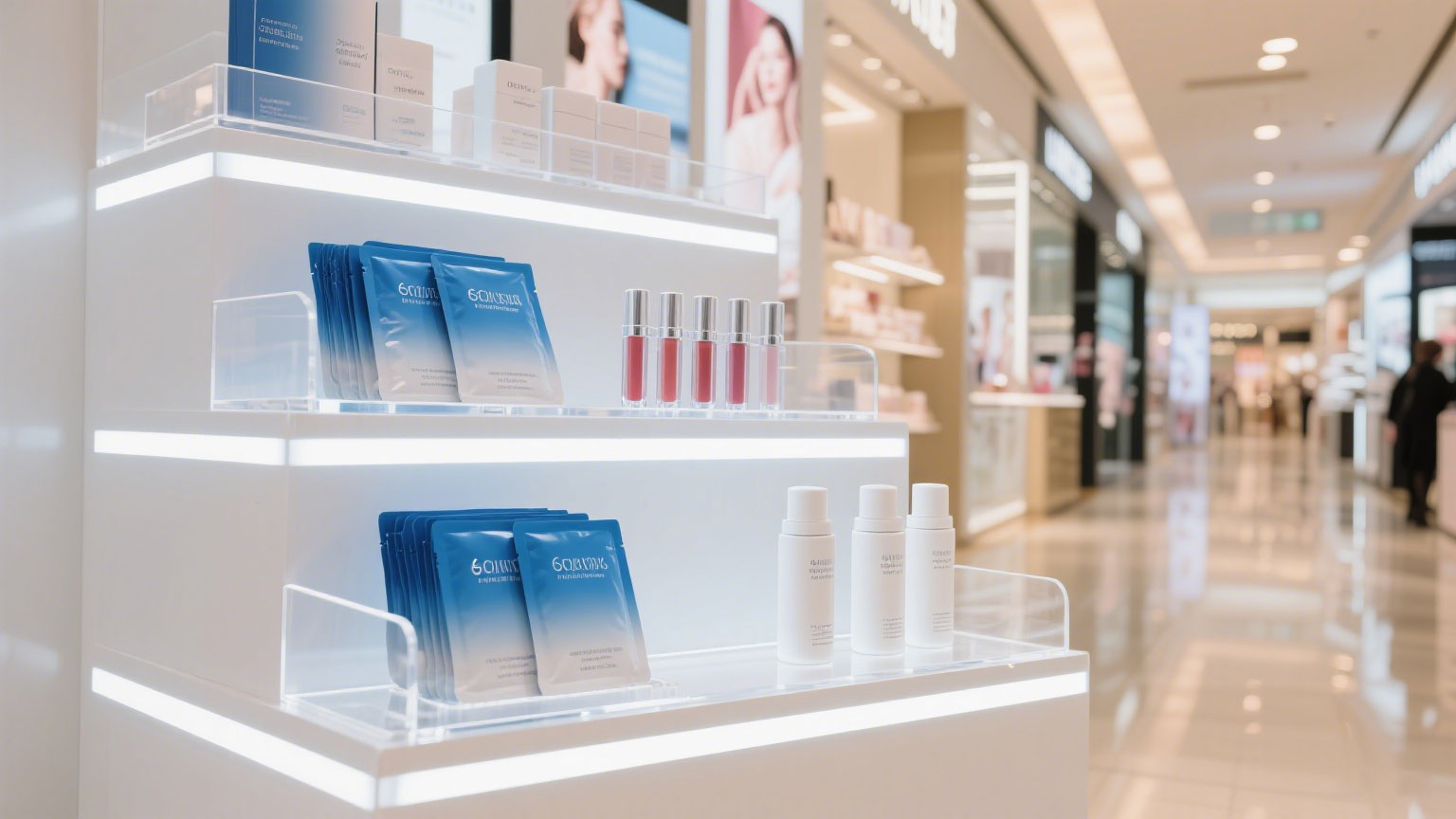
Acrylic is surprisingly durable for its lightweight nature. It’s 17 times more impact-resistant than glass, so it won’t shatter if knocked over—a huge plus for busy retail floors or wholesale shipping. However, acrylic is prone to scratches if not handled carefully. Fortunately, minor scratches can be buffed out with a plastic polish, extending the display’s lifespan.
Wooden Displays: Sturdy but Susceptible to Damage
Wood is naturally strong, and solid wood displays can last for years with proper care. However, wood is porous, meaning it absorbs moisture and oils from cosmetic products. Over time, this can lead to staining, warping, or mold growth—especially if the display is used in a humid retail environment (like a bathroom beauty section).
Metal Displays: The Heavy-Duty Option
Metal displays are the most durable of the three. Stainless steel and aluminum are rust-resistant (when properly finished), making them ideal for humid spaces or displays that hold liquid products (like perfume bottles). Iron displays are strong but can rust if not coated with a protective layer (e.g., paint or powder coating).
3. Aesthetics: Which Material Aligns with Your Brand Identity?
Your cosmetic display is an extension of your brand. The material you choose should match your brand’s personality—whether it’s modern, eco-friendly, luxury, or minimalist.
Acrylic Cosmetic Displays: Versatile and Visually Appealing
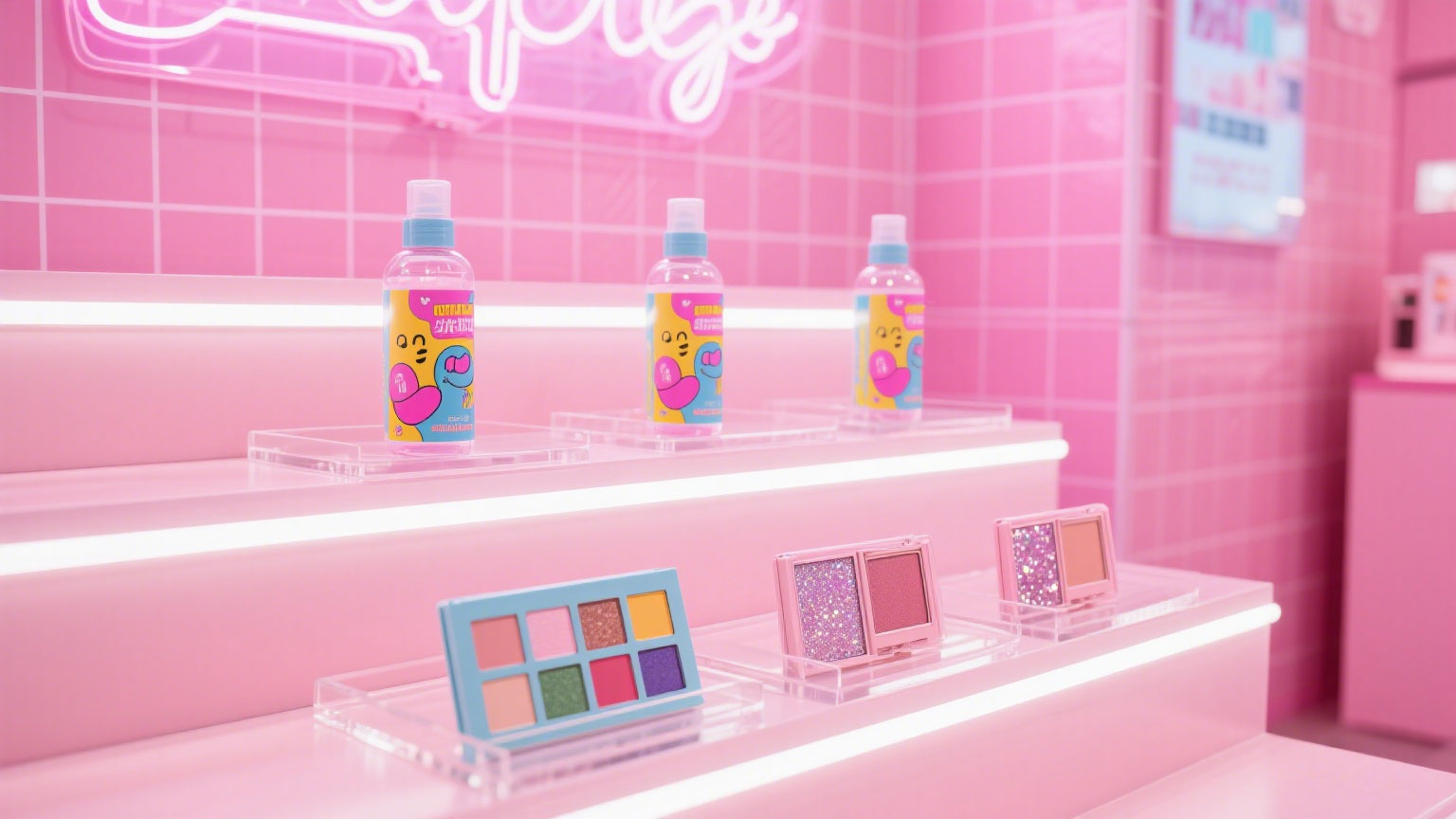
Acrylic’s biggest aesthetic advantage is its transparency. Clear acrylic displays make products the star of the show, as they don’t distract from the colors, textures, or packaging of cosmetics. This is perfect for brands with eye-catching product designs (like glittery lipsticks or sleek skincare bottles).
Acrylic is also highly versatile. It can be tinted to match your brand colors (e.g., pink for a girly makeup line, black for an edgy skincare brand) or frosted for a more subtle, elegant look. You can even print brand logos, product information, or patterns directly onto acrylic, turning the display into a marketing tool.
For retail spaces, acrylic displays create a clean, modern vibe that works in both high-end boutiques and drugstores. In wholesale, acrylic’s transparency helps buyers visualize how products will look in their own stores, increasing the likelihood of a purchase.
Wooden Displays: Warm and Authentic
Wooden displays are all about warmth and authenticity. They’re perfect for brands that want to convey an eco-friendly, artisanal, or luxury image. For example, a natural skincare brand might use bamboo displays to highlight its sustainability values, while a high-end perfume brand could opt for oak displays with a glossy finish to evoke luxury.
The texture of wood adds depth to retail spaces, making them feel cozy and inviting. Wooden countertop displays (like jewelry trays for lip balms or small skincare jars) add a touch of elegance to checkout areas, encouraging impulse buys.
However, wooden displays have a more niche aesthetic. They may not fit brands with a futuristic or minimalist identity, as the natural grain can feel too “busy” next to sleek product packaging.
Metal Displays: Sleek and Modern
Metal displays are synonymous with sleekness and sophistication. Chrome or stainless steel displays give retail spaces a modern, high-end look—perfect for luxury makeup brands or contemporary beauty stores. Matte black metal displays add an edgy, minimalist touch, while gold-plated metal brings glamour.
Metal’s rigidity also allows for clean, geometric designs (like wire racks or angular shelving) that complement modern product packaging. For wholesale, metal displays are a popular choice for showcasing larger products (like haircare sets or makeup palettes) because they convey strength and quality.
The downside? Metal can feel cold or industrial if not paired with softer elements (like fabric liners or wooden accents). It’s also less versatile than acrylic—changing the color or finish of a metal display is more difficult and expensive.
4. Cost-Effectiveness: Which Material Fits Your Budget?
Cost is a key consideration for both retail and wholesale businesses. Let’s break down the upfront and long-term costs of each material.
Acrylic Cosmetic Displays: Mid-Range Upfront, Low Long-Term

Acrylic displays are more expensive than plastic displays but cheaper than solid wood or high-quality metal. The upfront cost varies based on size and customization—small countertop acrylic organizers start at around $10–$20, while large freestanding acrylic displays can cost $100–$300.
The long-term cost of acrylic is low, thanks to its durability and ease of maintenance. Minor scratches can be repaired, and acrylic doesn’t require frequent refinishing (unlike wood) or re-coating (unlike metal). For wholesale suppliers, acrylic’s lightweight nature also reduces shipping costs—saving money on every order.
Wooden Displays: High Upfront, Moderate Long-Term
Wooden displays have the highest upfront cost, especially if made from solid wood. A small solid oak countertop display can cost $30–$50, while a large freestanding solid wood fixture can cost $200–$500 or more. Engineered wood displays are cheaper (starting at $20–$30 for small units) but have a shorter lifespan.
Long-term costs for wooden displays include maintenance: sealing or refinishing every 6–12 months to prevent staining and warping. For wholesale, wooden displays are heavy, which increases shipping costs. They’re also more prone to damage during shipping, leading to replacement costs.
Metal Displays: High Upfront, Low Long-Term
Metal displays have a high upfront cost, similar to solid wood. Small chrome wire racks start at $25–$40, while large stainless steel freestanding displays can cost $150–$400. The cost increases with finishes like gold plating or powder coating.
However, metal displays have low long-term costs. They require little maintenance—just occasional wiping to remove dust and fingerprints—and don’t need refinishing or re-coating. For wholesale, metal’s durability means fewer replacements due to shipping damage, but its weight increases shipping costs (offsetting some of the long-term savings).
5. Customization: Which Material Offers the Most Flexibility?
Customization is crucial for brands that want to stand out. Whether you need a display with your logo, a specific size, or a unique shape, the material’s flexibility matters.
Acrylic Cosmetic Displays: The Most Customizable Option

Acrylic is a dream for customization. It can be cut into any shape (circles, squares, curves, or brand-specific silhouettes) using laser cutting or routing. It can be tinted to any color, frosted for privacy, or engraved with logos, product names, or QR codes. You can even add LED lights to acrylic displays to make products glow—perfect for highlighting bestsellers in retail.
For wholesale, acrylic’s customization options allow suppliers to create displays tailored to a brand’s needs. For example, a wholesale supplier could make a custom acrylic shelf with a brand’s logo for a makeup line, helping the brand stand out in retail stores.
Wooden Displays: Customizable but Limited
Wooden displays can be customized with carvings, engravings, or paint, but the options are more limited than acrylic. Laser engraving is common for adding logos or designs, and wood can be stained or painted in various colors. However, wood’s rigidity makes it hard to cut into complex shapes—curved or intricate designs require specialized tools and increase costs.
Engineered wood is easier to customize than solid wood (it cuts more cleanly), but it’s less durable, so custom engineered wood displays may not last as long. For wholesale, custom wooden displays have longer lead times than acrylic, as woodworking is more labor-intensive.
Metal Displays: Customizable but Expensive
Metal displays can be customized with cuts, bends, or welds to create unique shapes, but this is more expensive and time-consuming than acrylic customization. Laser cutting is used for precise designs, and metal can be coated in different colors (via powder coating) or finishes (like chrome or gold).
However, metal customization is less flexible than acrylic. Changing the shape or size of a metal display requires reworking the entire structure, which is costly for small batches. For wholesale, custom metal displays are often only feasible for large orders, as the setup costs are high.
6. Practicality: Which Material Works Best for Retail and Wholesale Needs?
Practicality encompasses factors like weight, assembly, storage, and compatibility with different products. Let’s see how each material stacks up.
Acrylic Cosmetic Displays: Practical for Most Retail and Wholesale Uses

Acrylic’s lightweight nature makes it easy to move around retail floors—perfect for rearranging displays to highlight new products. Most acrylic displays are pre-assembled or require minimal assembly (with snap-on parts), saving time for retail staff.
For storage, acrylic displays are stackable (when designed properly), which is a bonus for wholesale suppliers with limited warehouse space. Acrylic is also compatible with most cosmetic products, from small lipsticks to large perfume bottles, and its transparency helps customers and wholesale buyers find products quickly.
The only practical downside? Acrylic can yellow over time if exposed to direct sunlight, so it’s best placed away from windows in retail spaces.
Wooden Displays: Practical for Niche Retail, Less So for Wholesale
Wooden displays are heavy, making them hard to move around retail floors. They often require assembly with screws or tools, which can be time-consuming. For storage, wooden displays are not stackable (due to their weight and shape), taking up more space in warehouses.
Wooden displays are best for retail spaces where the display is permanent (e.g., a wall-mounted shelf) or for showcasing small, lightweight products (like lip balms or face masks). For wholesale, their weight increases shipping costs, and their porous nature makes them risky for storing or shipping with liquid products.
Metal Displays: Practical for Heavy-Duty Retail, Tricky for Small Spaces
Metal displays are sturdy enough to hold heavy products (like hair dryers or skincare sets), making them ideal for retail spaces with large inventory. However, their weight makes them hard to move, so they’re best for permanent displays.
Assembly of metal displays often requires tools (like screwdrivers or wrenches), which can be a hassle for retail staff. For storage, metal displays are not stackable (unless they’re wire racks), and their rigidity makes them hard to fit into tight spaces.
For wholesale, metal displays are practical for shipping heavy products but costly due to their weight. They’re also compatible with most cosmetic products, as they’re resistant to oils and moisture.
7. The Verdict: Which Material Is Better for You?
There’s no one-size-fits-all answer— the best material depends on your brand identity, budget, and business needs. Here’s a quick guide to help you decide:
Choose Acrylic If:
You want a versatile, customizable display that highlights your products.
You need a lightweight material for easy movement or wholesale shipping.
You’re on a mid-range budget and want low long-term maintenance costs.
Your brand has a modern, clean, or playful identity.
Choose Wooden If:
You want to convey an eco-friendly, artisanal, or luxury brand image.
Your retail space has a rustic or warm aesthetic.
You’re showcasing small, lightweight products and don’t need to move the display often.
You have a high budget for upfront costs and maintenance.
Choose Metal If:
You need a heavy-duty display for large or heavy products.
Your brand has a modern, high-end, or industrial identity.
You want a display that lasts for years with minimal maintenance.
You’re placing the display in a humid environment (like a bathroom).
FAQ: Common Questions About Cosmetic Display Materials

Will Acrylic Displays Scratch Easily, And Can Scratches Be Fixed?
Yes, acrylic is prone to scratches with rough handling, but minor scratches are repairable. Use a plastic polish or acrylic scratch remover to buff them out—this extends the display’s lifespan. To prevent scratches, avoid abrasive cleaners and use a soft, damp cloth for cleaning. Unlike glass, acrylic won’t shatter, balancing resilience with easy maintenance.
Are Wooden Displays Suitable for Humid Retail Spaces like Bathrooms?
Wooden displays are risky for humid areas because wood is porous and absorbs moisture. This can lead to warping, staining, or mold growth over time. If using wood in humid spaces, choose solid wood (not MDF) and apply a high-quality water-resistant sealant. Wipe up spills immediately, and refinish the display every 6–12 months to protect it from moisture damage.
Do Metal Displays Cost More to Ship for Wholesale Orders?
Yes, metal’s heaviness increases wholesale shipping costs compared to acrylic. However, metal’s superior durability offsets this downside—metal displays withstand repeated shipping and handling with minimal damage, reducing replacement costs. For large wholesale orders, the long-term savings from fewer replacements may balance higher initial shipping fees. Aluminum options are lighter (and cheaper to ship) than steel or iron.
Which Material Offers the Most Affordable Customization for Small Brands?
Acrylic is the most budget-friendly for customization, even for small brands. It can be laser-cut into unique shapes, tinted, frosted, or engraved with logos at lower costs than wood or metal. Small-batch custom acrylic displays (e.g., branded countertop organizers) have shorter lead times and avoid the high setup fees of metal customization. Wooden customizations are pricier, especially for solid wood.
How Long Do Each of These Display Materials Typically Last?
Acrylic displays last 3–5 years with proper care (repairing scratches and avoiding direct sunlight). Solid wood displays can last 5–10+ years if sealed and refinished regularly, but engineered wood lasts only 2–4 years. Metal displays have the longest lifespan—5–15+ years—thanks to rust resistance (stainless steel/aluminum) and minimal maintenance. Durability varies by material quality and usage.
Conclusion
Acrylic, wooden, and metal cosmetic displays each have their strengths and weaknesses. Acrylic stands out for its versatility, customization options, and cost-effectiveness—making it the best all-around choice for most retail and wholesale businesses. Wooden displays are perfect for brands with an eco-friendly or luxury image, while metal displays excel in heavy-duty or high-end retail settings.
No matter which material you choose, remember that the best display is one that aligns with your brand, showcases your products, and meets the needs of your customers (and wholesale buyers). By weighing the factors in this guide, you’ll be able to make an informed decision that drives sales and grows your business.
Jayiacrylic: Your Leading China Custom Acrylic Display Manufacturer
Jayi acrylic is a professional custom acrylic display manufacturer in China. Jayi’s Acrylic Display solutions are crafted to enthrall customers and present products in the most alluring way. Our factory holds ISO9001 and SEDEX certifications, guaranteeing top-notch quality and ethical manufacturing practices. With more than 20 years of experience partnering with leading brands, we fully grasp the significance of designing retail displays that amplify product visibility and stimulate sales.
You Might Also Like Other Custom Acrylic Display Stands
Post time: Sep-26-2025

